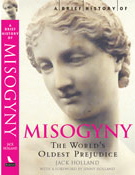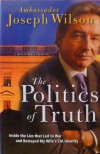Men in Trees
 Riding my bicycle uptown on Riverside Drive in Manhattan on Wednesday, parallel to the Hudson River at around 119th Street, I was surprised to see a convoy of vans all parked on the sidewalk adjacent to the road, where one usually sees dog walkers and strollers. I pulled over to ascertain why this posse of vehicles might be there, and then heard voices and shouts from overhead. I looked up and saw men in hard hats with ropes tied around their waists way up in the high limbs of the trees. There must have been ten of these guys, all a good 40 to 50 feet above the ground. They were wielding handsaws and trimming limbs which then fell to the earth below. Over the past couple years, New York City has suffered some tragic incidents where tree limbs have fallen on pedestrians and killed them, so I figured I was witnessing the trimming of dead limbs for public safety. The amazing thing was there was no cherry picker at hand, or FDNY vehicle that had helped them attain those heights–these guys all looked as if they had rappelled up in to the trees, or somehow hauled themselves up to where they could stand on those distant limbs. I took out my IPod Touch and against the backdrop of the late afternoon sky, took a couple pictures, hoping I would be able to view them later and assure myself that I had not just seen a New York apparition. After taking those shots, I got back on my bike, marveling that the New York City I love is always capable of presenting me with another unexpected sight. I never know where the next one might come from, right in front of my eyes, or up above me in the trees.
Riding my bicycle uptown on Riverside Drive in Manhattan on Wednesday, parallel to the Hudson River at around 119th Street, I was surprised to see a convoy of vans all parked on the sidewalk adjacent to the road, where one usually sees dog walkers and strollers. I pulled over to ascertain why this posse of vehicles might be there, and then heard voices and shouts from overhead. I looked up and saw men in hard hats with ropes tied around their waists way up in the high limbs of the trees. There must have been ten of these guys, all a good 40 to 50 feet above the ground. They were wielding handsaws and trimming limbs which then fell to the earth below. Over the past couple years, New York City has suffered some tragic incidents where tree limbs have fallen on pedestrians and killed them, so I figured I was witnessing the trimming of dead limbs for public safety. The amazing thing was there was no cherry picker at hand, or FDNY vehicle that had helped them attain those heights–these guys all looked as if they had rappelled up in to the trees, or somehow hauled themselves up to where they could stand on those distant limbs. I took out my IPod Touch and against the backdrop of the late afternoon sky, took a couple pictures, hoping I would be able to view them later and assure myself that I had not just seen a New York apparition. After taking those shots, I got back on my bike, marveling that the New York City I love is always capable of presenting me with another unexpected sight. I never know where the next one might come from, right in front of my eyes, or up above me in the trees.









